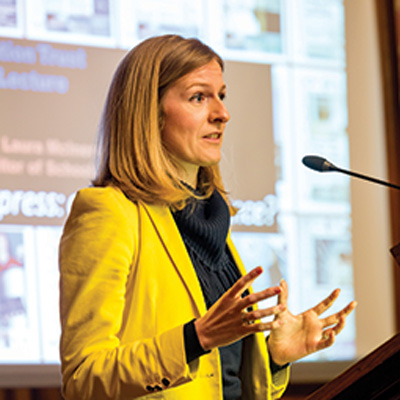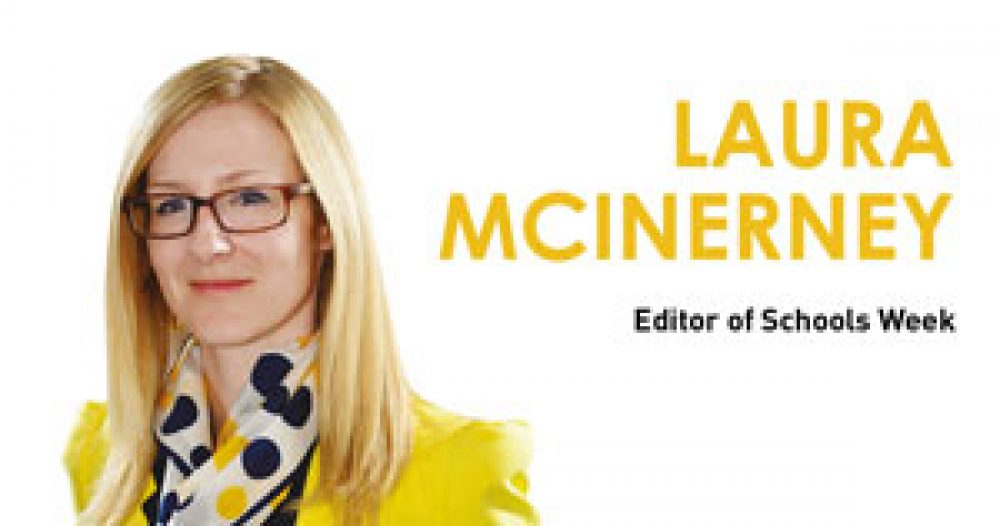It’s time for our annual chief executive pay league, a story that gets people hot under the collar and frantically sharing the paper.
Some people hate it. Each year a few trusts refuse to comment on individuals’ pay and over the coming months I’ll get sharp-elbowed communications officers telling me exactly what they think of the pay league.
On the other hand, I’ve had more than one academy chain leader sidle up and thank me for giving them information to use towards a pay increase or for making them feel better about the value they give their trusts. Contrary to popular belief, many leaders do worry about such things.

We’re aware that it’s an imperfect measure. It focuses on academy trusts when there are highly-paid heads of maintained schools – something that we have addressed this year. We do it because academy chief executives are a new and rare breed and because there really does appear to be no limit to what can be given.
This year we’re also taking notice of the readers who write in to point out that running lots of smaller primary schools might be easier than running fewer, larger secondaries, hence the “per school” rate can perhaps be misleading. To get around this we’ve added a new “per pupil” measure, which gives an interesting twist.
Still, I am aware that each year when we do these stories they can lead to a sense of attention and embarrassment that means a chief executive’s day is spent fielding questions from journalists rather than focusing on the “core business” of learning. And they have my sympathies on this, to an extent.
On Tuesday I presented the National Education Trust’s annual lecture, held in memory of the education journalist Mike Baker who died in 2012 from lung cancer.
The talk examined if the education press helps or hinders the sector and I was honest when I said that most days we do both.
But the hindrances – the days we make schools or leaders feel uncomfortable – are done with purpose
But the hindrances – the days we make schools or leaders feel uncomfortable – are done with purpose. As I explained, we ask ourselves with each story if the information will be valuable and important to the schools sector. We question if we can report it honestly. We try, as hard as possible, to work with trusts to understand their side of the story and to act as fairly as we can when published.
That’s why this year we looked across charitable sectors to benchmark chief executive pay. We wanted to make sure we were giving as complete and fair a picture of pay as possible.
People are sometimes surprised at this level of care. When I became editor, I was told that I just needed to grow a thick skin and accept that if everyone was shouting at us then we were doing our jobs correctly.
That’s nonsense. The number of people shouting about our story is not what matters. What really matters is whether a story is accurate, thorough and fair. When it is, then we know we have done right by the schools community, come cacophony or silence.
The trust chief executive pay league is always those things. Even if it’s uncomfortable too.








As I’ve pointed out on the main story, I want to pick you up in relation to payments made to heads of maintained schools. You say above that this is “something that we have addressed this year”, and yet the only thing you did was include a single sentence about Craig Tunstall. Is Mr Tunstall the only head of a maintained school who receives a noteworthy salary? Quite clearly not given that the academy-CEO salaries you deem as noteworthy include John Mannix who is on £85,000.
Your story also trumpets that Dan Moynihan is the “highest paid” on the basis that he is paid £16.04 per pupil and £14,483 per good or outstanding school.
This conveniently overlooks that using the same analysis Craig Tunstall is paid £83.23 per pupil (over 5 times higher than Dan Moynihan) and £41,250 per good or outstanding school (almost 3 times higher than Dan Moynihan).
How do you think you have “addressed” payments made to heads of maintained schools – I’d love to know ………
I’ll give you some more analysis that I bet won’t get taken any further. Using the annual returns published in 2015 the General Secretary of Unite (the biggest union) received remuneration of £80,907.
The General Secretaries of the teaching unions received the following:
NUT – £150,160
ATL – £139,963
NAHT – £150,902
NASUWT – £132,858
ASCL – £153,928
It gets even more interesting if you look at the difference between the General Secretaries based on remuneration per member (similar to your analysis of CEO pay per pupil). Taking Unite as the base point – i.e. the General Secretary is paid £80,907 for leading a union of 1,382,126 members, the salaries of the teaching unions’ General Secretaries stack up as follows:
NUT – 7 times higher than Unite
ATL – 12 times higher than Unite
NAHT – 63 times higher than Unite
NASUWT – 7 times higher than Unite
ASCL – 143 times higher than Unite
Have you never thought this was worthy of investigation?